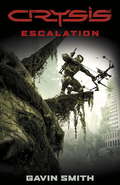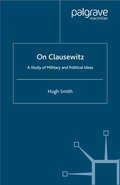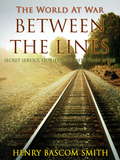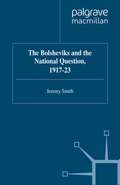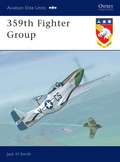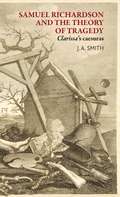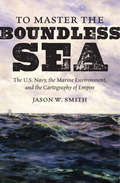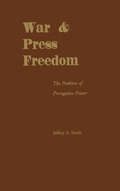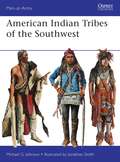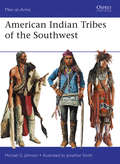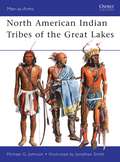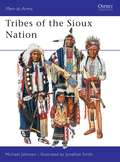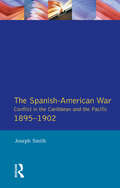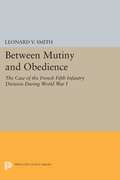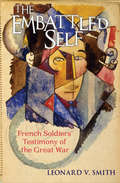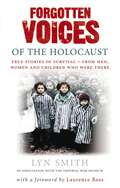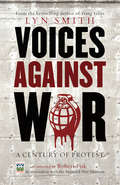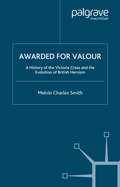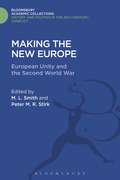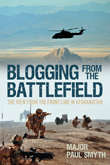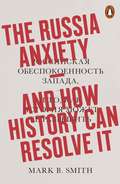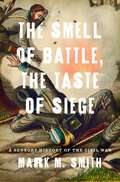- Table View
- List View
Crysis: Escalation
by Gavin G. SmithTo tie in to the massive new game CRYSIS 3, coming in February 2013 from EA, Gavin Smith has been signed up to write a selection of connected short stories that will explore and expand the game world. Gavin's futuristic and punchy fiction is a perfect fit for CRYSIS, and this will be a delight for game-players and SF fans alike.With stories covering the fan favourite characters of Prophet, Psycho and Alcatraz, as well as introducing themes, enemies and weapons new to CRYSIS 3, this will be a vital part of the game experience. Punchy and kinetic, this is SF with steel at its heart.
On Clausewitz: A Study of Military and Political Ideas
by H. SmithClausewitz is often quoted but more often misunderstood. On Clausewitz presents his central ideas about war and politics - such as war as an instrument of policy, the concept of Absolute War, friction and the fog of war - in a clear and systematic fashion. It also presents the man, his life and the military and intellectual environment in which he produced his great work On War . A final section considers Clausewitz's relevance to the rapidly changing nature of war today.
Between the Lines / Secret Service Stories Told Fifty Years After: Secret Service Stories Told Fifty Years After (The World At War)
by Henry SmithFor those interested in the nitty gritty of the Civil War. It is hard to imagine living at a time and in a place where you were not sure where you and your friends stood. (Excerpt from Goodreads)
The Bolsheviks and the National Question, 1917–23 (Studies in Russia and East Europe)
by J. SmithIn a timely re-examination of the origins of the system which fell apart so dramatically in 1991, this book deals with the policies of the Soviets towards the non-Russian nationalities of the former Russian Empire. Making extensive use of previously unavailable material from the Soviet archives, Jeremy Smith explores the attempts of the Bolsheviks to promote the development of minority nationalities in the Soviet context, through a combination of political, cultural and educational measures, and looks at the disputes surrounding the creation of the Soviet Union.
359th Fighter Group (Aviation Elite Units #10)
by Jack H SmithNicknamed the 'Unicorns', the 359th FG was one of the last groups to arrive in the UK for service in the ETO with the Eighth Air Force. First seeing action on 13 December 1943, the group initially flew bomber escort sweeps in P-47s, before converting to the ubiquitous P-51 in March/April 1944. Throughout its time in the ETO, the 359th was credited with the destruction of 351 enemy aircraft destroyed between December 1943 and May 1945. The exploits of all 12 aces created by the group are detailed, along with the most significant missions flown. This book also discusses the various markings worn by the group's three squadrons, the 368th, 369th and 370th FSs
Samuel Richardson and the theory of tragedy: Clarissa's caesuras (PDF)
by James SmithSamuel Richardson and the theory of tragedy is a bold new interpretation of one of the greatest European novels, Samuel Richardson's Clarissa. It argues that this text needs to be rethought as a dangerous exploration of the ethics of tragedy, on the scale of the great arguments of post-Romantic tragic theory, from Hölderlin to Nietzsche, to Benjamin, Lacan and beyond. Taking the reader through the novel from beginning to end, it also acts as a guidebook for newcomers to Richardson's notoriously massive text, and situates it alongside Richardson's other works and the epistolary novel form in general. Filled with innovative close readings that will provoke scholars, students and general readers of the novel alike, it will also serve as a jumping off point for anyone interested in the way the theory of tragedy continues to be the privileged meeting point between literature and philosophy.
Samuel Richardson and the theory of tragedy: Clarissa's caesuras
by James SmithSamuel Richardson and the theory of tragedy is a bold new interpretation of one of the greatest European novels, Samuel Richardson's Clarissa. It argues that this text needs to be rethought as a dangerous exploration of the ethics of tragedy, on the scale of the great arguments of post-Romantic tragic theory, from Hölderlin to Nietzsche, to Benjamin, Lacan and beyond. Taking the reader through the novel from beginning to end, it also acts as a guidebook for newcomers to Richardson's notoriously massive text, and situates it alongside Richardson's other works and the epistolary novel form in general. Filled with innovative close readings that will provoke scholars, students and general readers of the novel alike, it will also serve as a jumping off point for anyone interested in the way the theory of tragedy continues to be the privileged meeting point between literature and philosophy.
To Master the Boundless Sea: The U.S. Navy, the Marine Environment, and the Cartography of Empire (Flows, Migrations, and Exchanges)
by Jason W. SmithAs the United States grew into an empire in the late nineteenth century, notions like "sea power" derived not only from fleets, bases, and decisive battles but also from a scientific effort to understand and master the ocean environment. Beginning in the early nineteenth century and concluding in the first years of the twentieth, Jason W. Smith tells the story of the rise of the U.S. Navy and the emergence of American ocean empire through its struggle to control nature. In vividly told sketches of exploration, naval officers, war, and, most significantly, the ocean environment, Smith draws together insights from environmental, maritime, military, and naval history, and the history of science and cartography, placing the U.S. Navy's scientific efforts within a broader cultural context.By recasting and deepening our understanding of the U.S. Navy and the United States at sea, Smith brings to the fore the overlooked work of naval hydrographers, surveyors, and cartographers. In the nautical chart's soundings, names, symbols, and embedded narratives, Smith recounts the largely untold story of a young nation looking to extend its power over the boundless sea.
War And Press Freedom: The Problem Of Prerogative Power
by Jeffery A. SmithIn the two centuries from the ratification of the First Amendment in 1791 through the Gulf War in 1991, the American press lacked an adequate right to analyze and report on the nation's armed conflicts. When restrictions were challenged as violations of the Constitution, military regulations and federal laws were justified as necessary under the "higher law" of survival. Is there law more important than the Constitution which allows prerogative powers to be used in a time of war or national crisis? This groundbreaking and provocative study, examining law and history over these two hundred years, argues that press freedom cannot and should not be suspended during armed conflict. The military and the media must work together because neither has authority over the other.
War and Press Freedom: The Problem of Prerogative Power
by Jeffery A. SmithWar and Press Freedom: The Problem of Prerogative Power is a groundbreaking and provocative study of one of the most perplexing civil liberties issues in American history: What authority does or should the government have to control press coverage and commentary in wartime? First Amendment scholar Jeffery A. Smith shows convincingly that no such extraordinary power exists under the Constitution, and that officials have had to rely on claiming the existence of an autocratic "higher law" of survival. Smith carefully surveys the development of statutory restrictions and military regulations for the news media from the ratification of the Bill of Rights in 1791 through the Gulf War of 1991. He concludes that the armed forces can justify refusal to divulge a narrow range of defense secrets, but that imposing other restrictions is unwise, unnecessary, and unconstitutional. In any event, as electronic communication becomes almost impossible to constrain, soldiers and journalists must learn how to respect each other's obligations in a democratic system.
American Indian Tribes of the Southwest (Men-at-Arms)
by Jonathan Smith Michael G JohnsonThis focuses on the history, costume, and material culture of the native peoples of North America. It was in the Southwest – modern Arizona, New Mexico, and parts of California and other neighboring states – that the first major clashes took place between 16th-century Spanish conquistadors and the indigenous peoples of North America. This history of contact, conflict, and coexistence with first the Spanish, then their Mexican settlers, and finally the Americans, gives a special flavor to the region. Despite nearly 500 years of white settlement and pressure, the traditional cultures of the peoples of the Southwest survive today more strongly than in any other region. The best-known clashes between the whites and the Indians of this region are the series of Apache wars, particularly between the early 1860s and the late 1880s. However, there were other important regional campaigns over the centuries – for example, Coronado's battle against the Zuni at Hawikuh in 1540, during his search for the legendary "Seven Cities of Cibola†?; the Pueblo Revolt of 1680; and the Taos Revolt of 1847 – and warriors of all of these are described and illustrated in this book.
American Indian Tribes of the Southwest (Men-at-Arms #488)
by Jonathan Smith Michael G JohnsonThis focuses on the history, costume, and material culture of the native peoples of North America. It was in the Southwest – modern Arizona, New Mexico, and parts of California and other neighboring states – that the first major clashes took place between 16th-century Spanish conquistadors and the indigenous peoples of North America. This history of contact, conflict, and coexistence with first the Spanish, then their Mexican settlers, and finally the Americans, gives a special flavor to the region. Despite nearly 500 years of white settlement and pressure, the traditional cultures of the peoples of the Southwest survive today more strongly than in any other region. The best-known clashes between the whites and the Indians of this region are the series of Apache wars, particularly between the early 1860s and the late 1880s. However, there were other important regional campaigns over the centuries – for example, Coronado's battle against the Zuni at Hawikuh in 1540, during his search for the legendary "Seven Cities of Cibola†?; the Pueblo Revolt of 1680; and the Taos Revolt of 1847 – and warriors of all of these are described and illustrated in this book.
North American Indian Tribes of the Great Lakes (Men-at-Arms)
by Jonathan Smith Michael G JohnsonThis book details the growth of the European Fur trade in North America and how it drew the Native Americans who lived in the Great Lakes region, notably the Huron, Dakota, Sauk and Fox, Miami and Shawnee tribes into the colonial European Wars. During the French and Indian War, the American Revolution, and the War of 1812, these tribes took sides and became important allies of the warring nations. However, slowly the Indians were pushed westward by the encroachment of more settlers. This tension finally culminated in the 1832 Black Hawk's War, which ended with the deportation of many tribes to distant reservations.
Tribes of the Sioux Nation (Men-at-Arms)
by Jonathan Smith Michael G JohnsonThe horse culture of the tribes of the High Plains of North America lasted only some 170 years; yet in that time the sub-tribes of the Teton or Western Sioux people imprinted a vivid image on the world's imagination by their fearless but doomed fight to protect their hunting grounds from the inevitable spread of the white man. This text outlines the history, social organization, religion and material culture of the Santee, Yankton and Teton Sioux; rare early photographs include portraits of many of the great war chiefs and warriors of the Plains Indian Wars, and eight detailed plates record details of Sioux traditional costume.
The Spanish-American War 1895-1902: Conflict in the Caribbean and the Pacific
by Joseph SmithFought in both Caribbean and Pacific and turning on America's superior naval strength, this short but decisive war had momentous consequences internationally. It ended Spain's imperial power, and the US emerged for the first time as an active force in world affairs, acquiring -- amidst much domestic controversy -- an empire of her own in the Philippines, Guam, Puerto Rico, and Cuba (whose struggle against Spain had sparked the war). Heavy with implications for twentieth-century America, the war is explored in its widest context in this engrossing and impressive study.
The Spanish-American War 1895-1902: Conflict in the Caribbean and the Pacific
by Joseph SmithFought in both Caribbean and Pacific and turning on America's superior naval strength, this short but decisive war had momentous consequences internationally. It ended Spain's imperial power, and the US emerged for the first time as an active force in world affairs, acquiring -- amidst much domestic controversy -- an empire of her own in the Philippines, Guam, Puerto Rico, and Cuba (whose struggle against Spain had sparked the war). Heavy with implications for twentieth-century America, the war is explored in its widest context in this engrossing and impressive study.
Between Mutiny and Obedience: The Case of the French Fifth Infantry Division during World War I (PDF)
by Leonard V. SmithLiterary and historical conventions have long painted the experience of soldiers during World War I as simple victimization. Leonard Smith, however, argues that a complex dialogue of resistance and negotiation existed between French soldiers and their own commanders. In this case study of wartime military culture, Smith analyzes the experience of the French Fifth Infantry Division in both pitched battle and trench warfare. The division established a distinguished fighting record from 1914 to 1916, yet proved in 1917 the most mutinous division in the entire French army, only to regain its elite reputation in 1918. Drawing on sources from ordinary soldiers to well-known commanders such as General Charles Mangin, the author explains how the mutinies of 1917 became an explicit manifestation of an implicit struggle that took place within the French army over the whole course of the war.Smith pays particular attention to the pivotal role of noncommissioned and junior officers, who both exercised command authority and shared the physical perils of men in the lower ranks. He shows that "soldiers," broadly defined, learned to determine rules of how they would and would not fight the war, and imposed these rules on the command structure itself. By altering the parameters of command authority in accordance with their own perceived interests, soldiers and commanders negotiated a behavioral space between mutiny and obedience.Originally published in 1994.The Princeton Legacy Library uses the latest print-on-demand technology to again make available previously out-of-print books from the distinguished backlist of Princeton University Press. These editions preserve the original texts of these important books while presenting them in durable paperback and hardcover editions. The goal of the Princeton Legacy Library is to vastly increase access to the rich scholarly heritage found in the thousands of books published by Princeton University Press since its founding in 1905.
The Embattled Self: French Soldiers' Testimony of the Great War
by Leonard V. SmithHow did the soldiers in the trenches of the Great War understand and explain battlefield experience, and themselves through that experience? Situated at the intersection of military history and cultural history, The Embattled Self draws on the testimony of French combatants to explore how combatants came to terms with the war. In order to do so, they used a variety of narrative tools at hand—rites of passage, mastery, a character of the soldier as a consenting citizen of the Republic. None of the resulting versions of the story provided a completely consistent narrative, and all raised more questions about the "truth" of experience than they answered. Eventually, a story revolving around tragedy and the soldier as victim came to dominate—even to silence—other types of accounts. In thematic chapters, Leonard V. Smith explains why the novel structured by a specific notion of trauma prevailed by the 1930s.Smith canvasses the vast literature of nonfictional and fictional testimony from French soldiers to understand how and why the "embattled self" changed over time. In the process, he undermines the conventional understanding of the war as tragedy and its soldiers as victims, a view that has dominated both scholarly and popular opinion since the interwar period. The book is important reading not only for traditional historians of warfare but also for scholars in a variety of fields who think critically about trauma and the use of personal testimony in literary and historical studies.
Forgotten Voices of The Holocaust: A new history in the words of the men and women who survived
by Lyn SmithFollowing the success of Forgotten Voices of the Great War, Lyn Smith visits the oral accounts preserved in the Imperial War Museum Sound Archive, to reveal the sheer complexity and horror of one of human history's darkest hours. The great majority of Holocaust survivors suffered considerable physical and psychological wounds, yet even in this dark time of human history, tales of faith, love and courage can be found. As well as revealing the story of the Holocaust as directly experienced by victims, these testimonies also illustrate how, even enduring the most harsh conditions, degrading treatment and suffering massive family losses, hope, the will to survive, and the human spirit still shine through.
Voices Against War: A Century of Protest
by Lyn SmithBased on nearly 200 personal testimonies from the Imperial War Museum's Collections, this landmark book tells the stories of those of those who participated in anti-war protest from the First World War 1914-18 to the ongoing conflicts in Iraq and Afghanistan.Voices Against War is a compelling, emotional and very moving human story, essential for understanding war in its entirety.
Awarded for Valour: A History of the Victoria Cross and the Evolution of British Heroism (Studies in Military and Strategic History)
by M. SmithBased on primary source research, this is the most comprehensive history of the Victoria Cross available, tracing the evolution of the award from its inception in 1856 to the most recent bestowals. The study also examines the evolution of the concept of heroism and how the definition of heroism changed along with the nature of warfare.
Making the New Europe: European Unity and the Second World War (History and Politics in the 20th Century: Bloomsbury Academic)
by M. L. Smith Peter M.R. StirkThis volume evaluates the notion of European Unity in a period when European identity was subjected to the destructive consequences of Nazi and Fascist domination of much of the Continent. By presenting the competing visions of transformation and reconstruction played out during the war years the book aims to provide broader-based and more complex insights into forces that shaped the post-war period than those in conventional accounts that locate the thinking about European unity only in the years after 1945.
Blogging from the Battlefield: The View from the Front Line in Afghanistan
by Major Paul SmithFront Line Bloggers - Afghanistan and Helmand Blog - Aghanistan (now combined as UK Forces Afghanistan) were established by the MoD to allow UK armed forces personnel to tell the public back home what they were doing there, in their own words. Officers, NCOs and other ranks representing a wide variety of units - infantry, artillery, signals, logistics, aviation, medical - contribute their thoughts and experiences on everything from what it's like to take on the Taliban in a firefight to the difficulties of trying to eat well at a patrol base. These personal accounts give a picture of the conflict at ground level, the details of daily life that usually do not make the news, as well as individuals' perspectives on major events. Some of the bloggers have even been asked to contribute to the Radio 4 Today Programme and Channel 4 News. With the war in Afghanistan in the news almost constantly, this is a timely book which tells the real story of what it's like for our troops on the ground.
The Russia Anxiety: And How History Can Resolve It
by Mark B. SmithRussia is an exceptional country, the biggest in the world. It is both European and exotic, powerful and weak, brilliant and flawed. Why are we so afraid of it? Time and again, we judge Russia by unique standards. We have usually assumed that it possesses higher levels of cunning, malevolence and brutality. Yet the country has more often than not been a crucial ally, not least against Napoleon and in the two world wars. We admire its music and its writers. We lavish praise on the Russian soul. And still we think of Russia as a unique menace. What is it about this extraordinary country that consistently provokes such excessive responses? And why is this so dangerous?Ranging from the earliest times to the present, Mark B. Smith's remarkable new book is a history of this 'Russia Anxiety'. Whether ally or enemy, superpower or failing state, Russia grips our imagination and fuels our fears unlike any other country. This book shows how history itself offers a clearer view and a better future.
The Smell of Battle, the Taste of Siege: A Sensory History of the Civil War
by Mark M. SmithHistorical accounts of major events have almost always relied upon what those who were there witnessed. Nowhere is this truer than in the nerve-shattering chaos of warfare, where sight seems to confer objective truth and acts as the basis of reconstruction. In The Smell of Battle, the Taste of Siege, historian Mark M. Smith considers how all five senses, including sight, shaped the experience of the Civil War and thus its memory, exploring its full sensory impact on everyone from the soldiers on the field to the civilians waiting at home. From the eardrum-shattering barrage of shells announcing the outbreak of war at Fort Sumter; to the stench produced by the corpses lying in the mid-summer sun at Gettysburg; to the siege of Vicksburg, once a center of Southern culinary aesthetics and starved into submission, Smith recreates how Civil War was felt and lived. Relying on first-hand accounts, Smith focuses on specific senses, one for each event, offering a wholly new perspective. At Bull Run, the similarities between the colors of the Union and Confederate uniforms created concern over what later would be called "friendly fire" and helped decide the outcome of the first major battle, simply because no one was quite sure they could believe their eyes. He evokes what it might have felt like to be in the HL Hunley submarine, in which eight men worked cheek by jowl in near-total darkness in a space 48 inches high, 42 inches wide. Often argued to be the first "total war," the Civil War overwhelmed the senses because of its unprecedented nature and scope, rendering sight less reliable and, Smith shows, forcefully engaging the nonvisual senses. Sherman's March was little less than a full-blown assault on Southern sense and sensibility, leaving nothing untouched and no one unaffected. Unique, compelling, and fascinating, The Smell of Battle, The Taste of Siege, offers readers way to experience the Civil War with fresh eyes.
